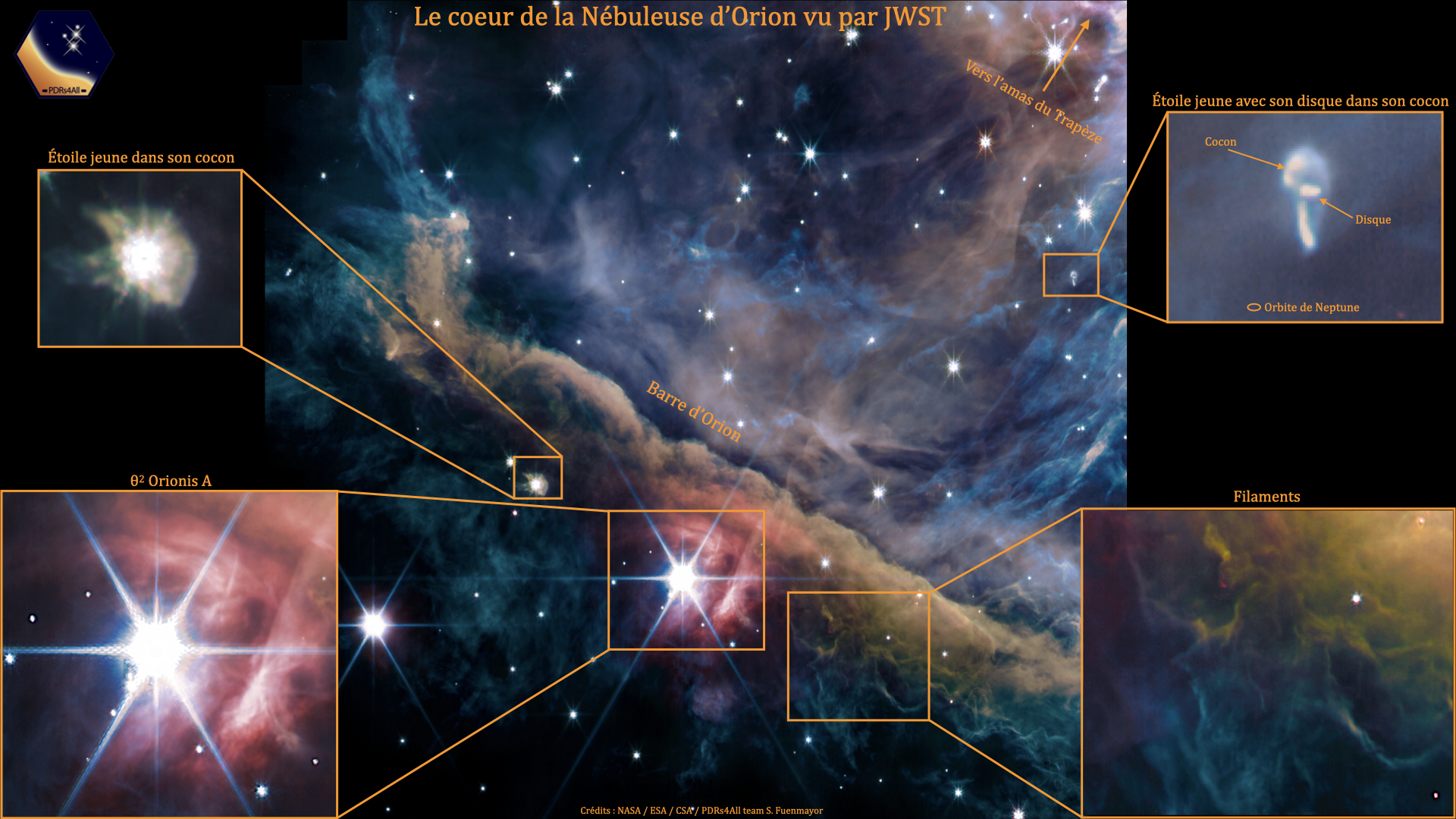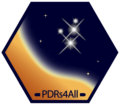
This is a composite image from several filters that represents emission from ionized gas, hydrocarbons, molecular gas, dust and scattered starlight. Most prominent is the Orion Bar, a wall of dense gas and dust that runs from the top left to the bottom right in this image, and that contains the bright star θ2 Orionis A. The scene is illuminated by a group of hot, young massive stars (known as the Trapezium Cluster) which is located just off the top right of the image. The strong and harsh ultraviolet radiation of the Trapezium cluster creates a hot, ionized environment in the upper right, and slowly erodes the Orion Bar away. Molecules and dust can survive longer in the shielded environment offered by the dense Bar, but the surge of stellar energy sculpts a region that displays an incredible richness of filaments, globules, young stars with disks and cavities.
Credit: NASA, ESA, CSA, Data reduction and analysis : PDRs4All ERS Team; graphical processing S. Fuenmayor
Technical details: The image was obtained with the James Webb Space Telescope NIRCam instrument on September 11, 2022. Several images in different filters were combined to create this composite image: F140M and F210M (blue); F277W, F300M, F323N, F335M, and F332W (green); F405N (orange); and F444W, F480M, and F470N (red).
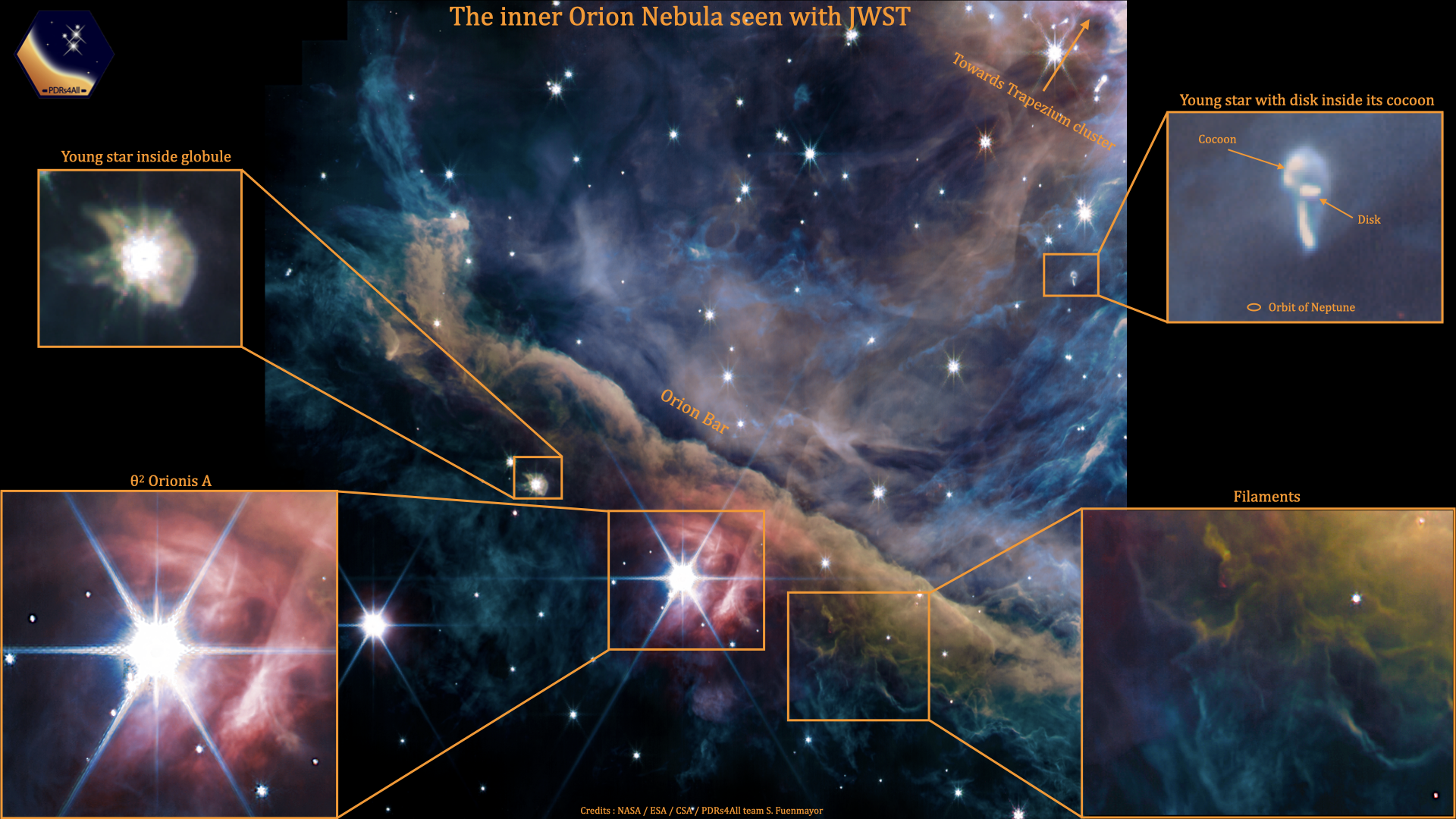
Filaments: The entire image is rich in filaments of different sizes and shapes. The inset here shows thin, meandering filaments that are especially rich in hydrocarbon molecules and molecular hydrogen.
θ2 Orionis A: The brightest star in this image is θ2 Orionis A, a star that is just bright enough to be seen with the naked eye from a dark location on Earth. Stellar light that is reflecting off dust grains causes the red glow in its immediate surroundings.
Young star inside globule: When dense clouds of gas and dust become gravitationally unstable, they collapse into stellar embryos that gradually grow more massive until they can start nuclear fusion in their core – they start to shine. This young star is still embedded in its natal cloud.
Credit: NASA, ESA, CSA, Data reduction and analysis : PDRs4All ERS Team; graphical processing S. Fuenmayor & O. Berné
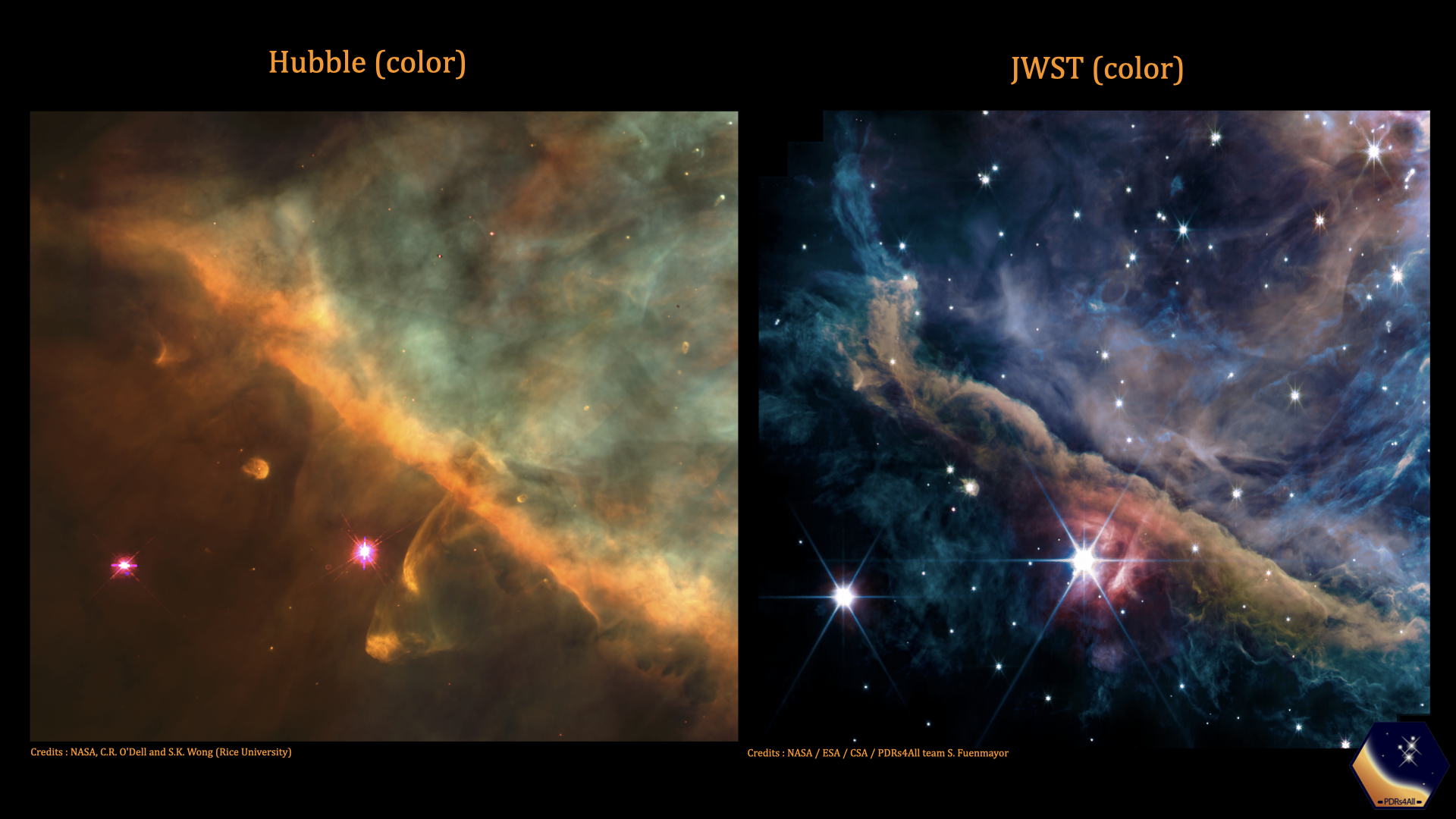
The inner region of the Orion Nebula as seen by both the Hubble Space Telescope (left) and the James Webb Space Telescope (right). The HST image is dominated by emission from hot ionized gas, highlighting the side of the Orion Bar which is facing the Trapezium Cluster (off the top right of the image). The JWST image also shows the cooler molecular material that is slightly further away from the Trapezium Cluster (compare the location of the Orion Bar relative to the bright star θ2 Orionis A for example). Webb’s sensitive infrared vision can furthermore peer through thick dust layers and see fainter stars. This will allow scientists to study what is happening deep inside the nebula.
Credit: NASA, ESA, CSA, PDRs4All ERS Team; image processing Olivier Berné.
Credit for the HST image: NASA/STScI/Rice Univ./C.O’Dell et al. – Program ID: PRC95-45a. Technical details: The HST image used WFPC2 mosaic.This composite image uses [OIII] (blue), ionized hydrogen (green), and [NII] (red).
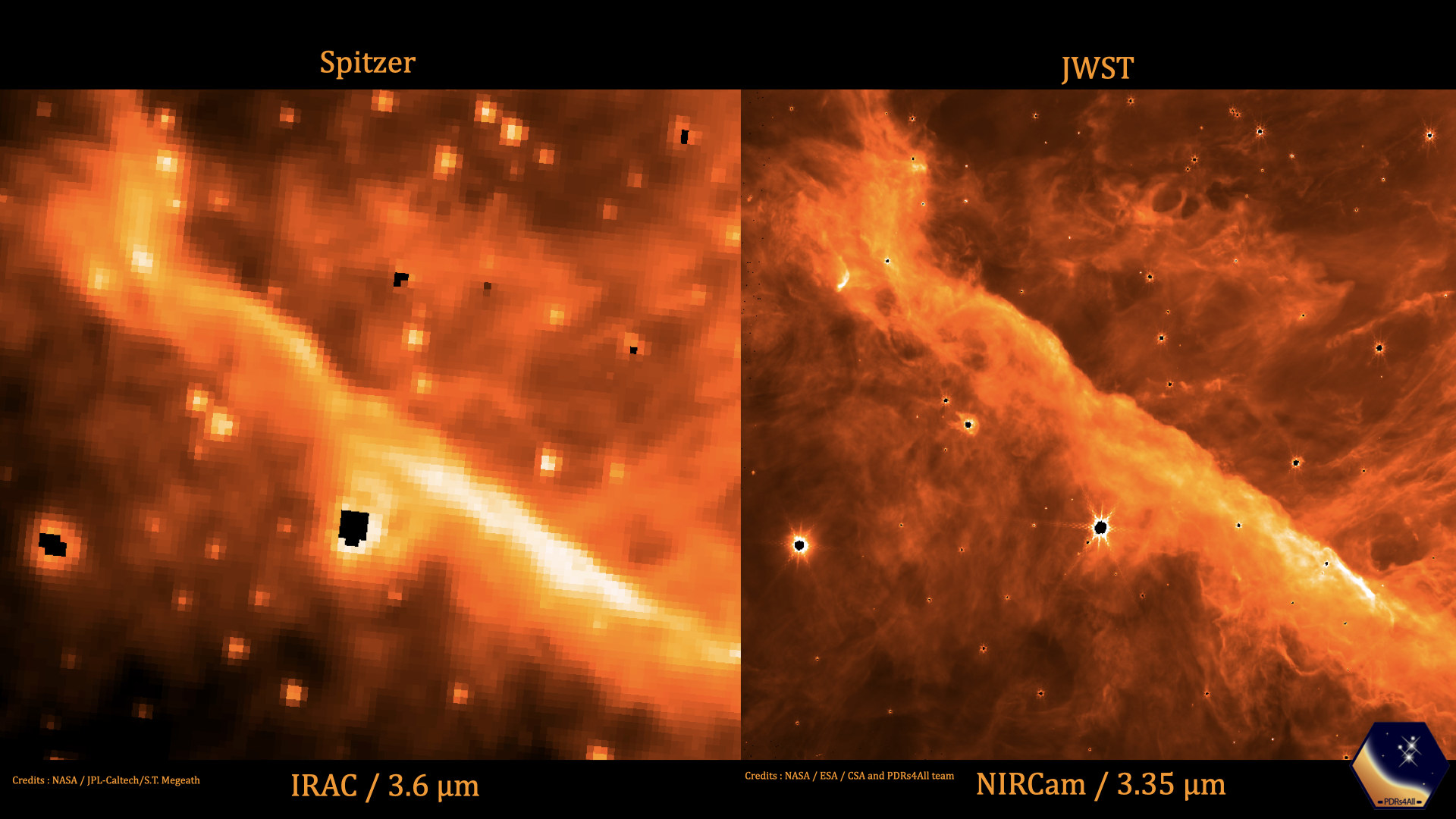
The inner region of the Orion Nebula as seen by both the Spitzer Space Telescope (left) and the James Webb Space Telescope (right). Both images were recorded with a filter that is particularly sensitive to the emission from hydrocarbon dust that glows throughout the entire image. This comparison strikingly illustrates how incredibly sharp Webb’s images are in comparison to its infrared precursor, the Spitzer Space Telescope. This is immediately clear from the intricate filaments, but Webb’s sharp eyes also allow us to better distinguish stars from globules and protoplanetary disks.
Credits for NIRCam image : NASA, ESA, CSA, PDRs4All ERS Team; image processing Olivier Berné.
Credit for the Spitzer image: NASA/JPL-Caltech/T. Megeath (University of Toledo, Ohio)
Technical details: The Spitzer image shows infrared light at 3.6 microns captured by Spitzer’s infrared array camera (IRAC). The JWST image shows infrared light at 3.35 microns captured by JWST NIRCam. Black pixels are artifacts due to saturation of the detectors by bright stars.
BONUS IMAGE
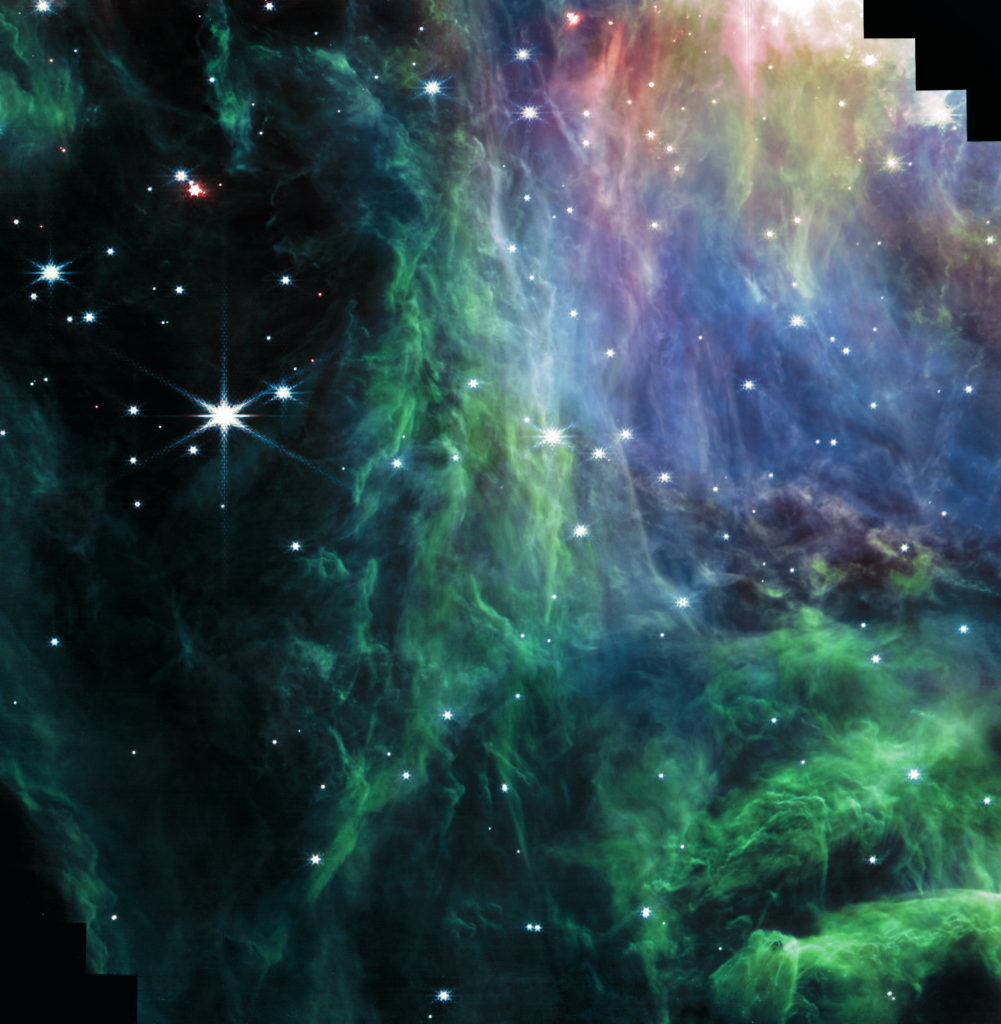
FRENCH VERSION
